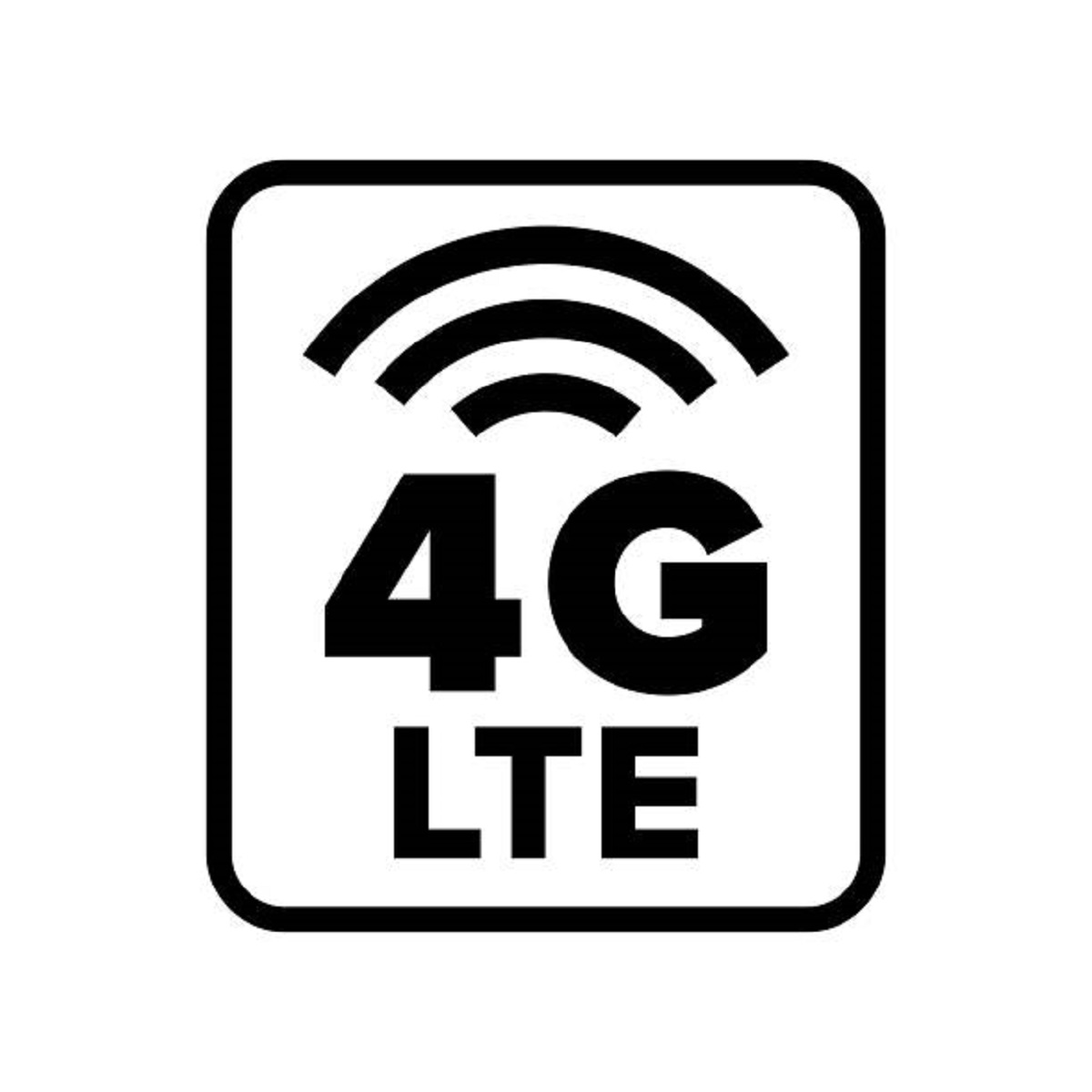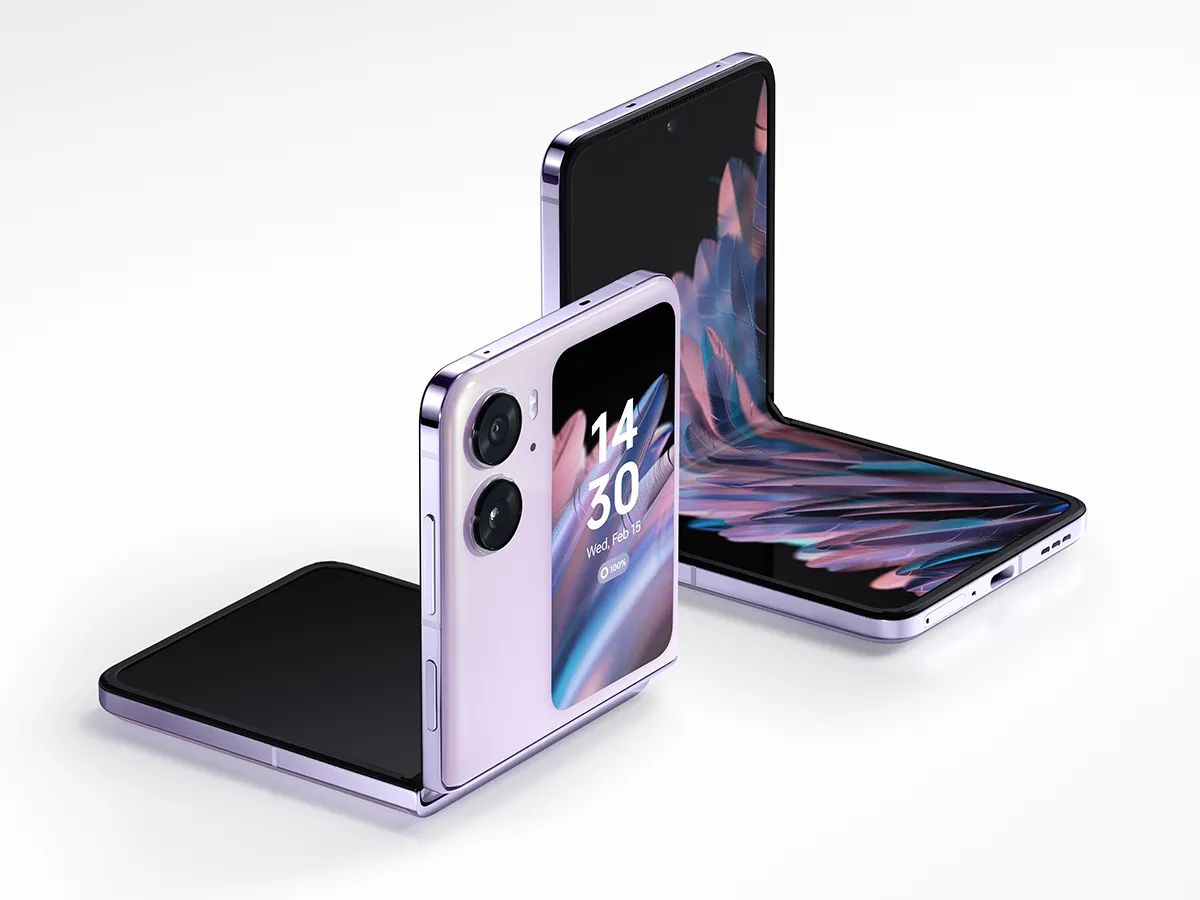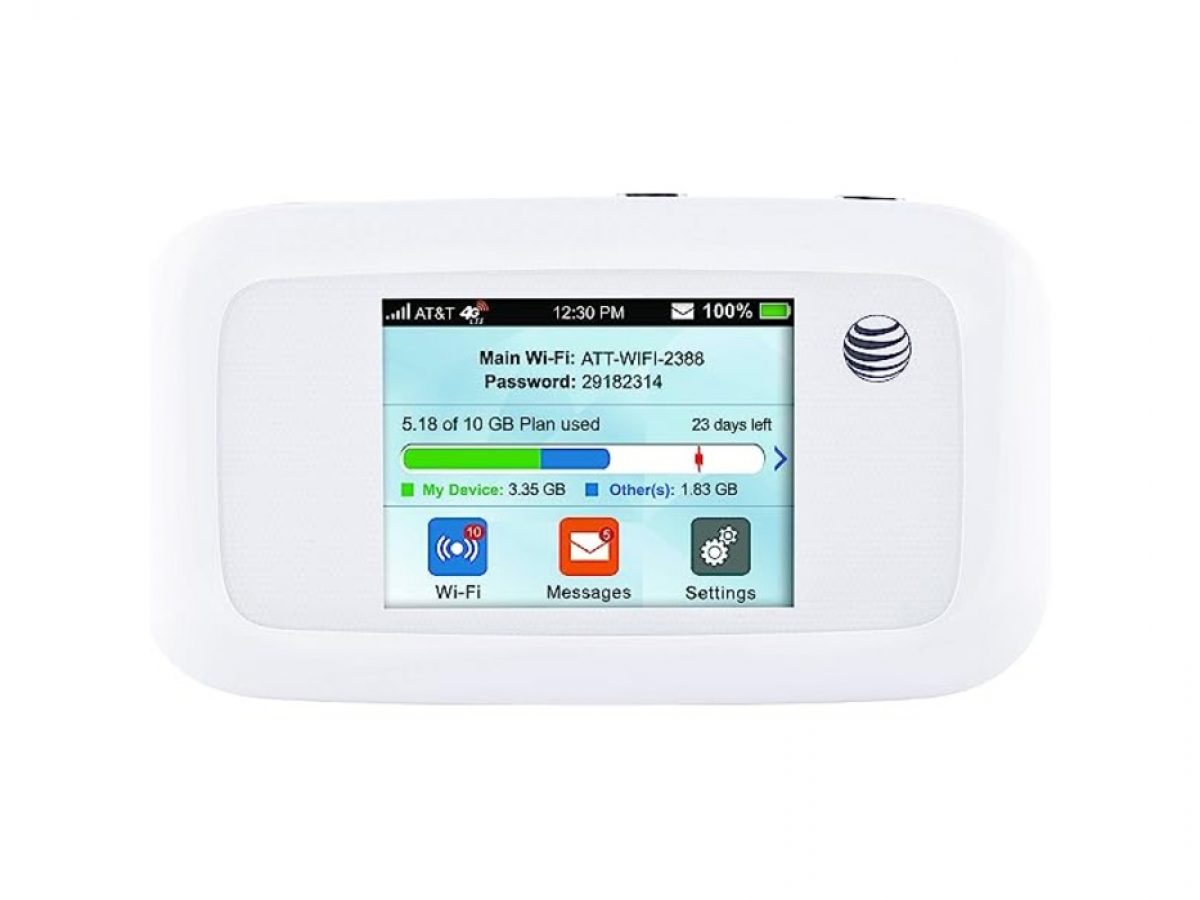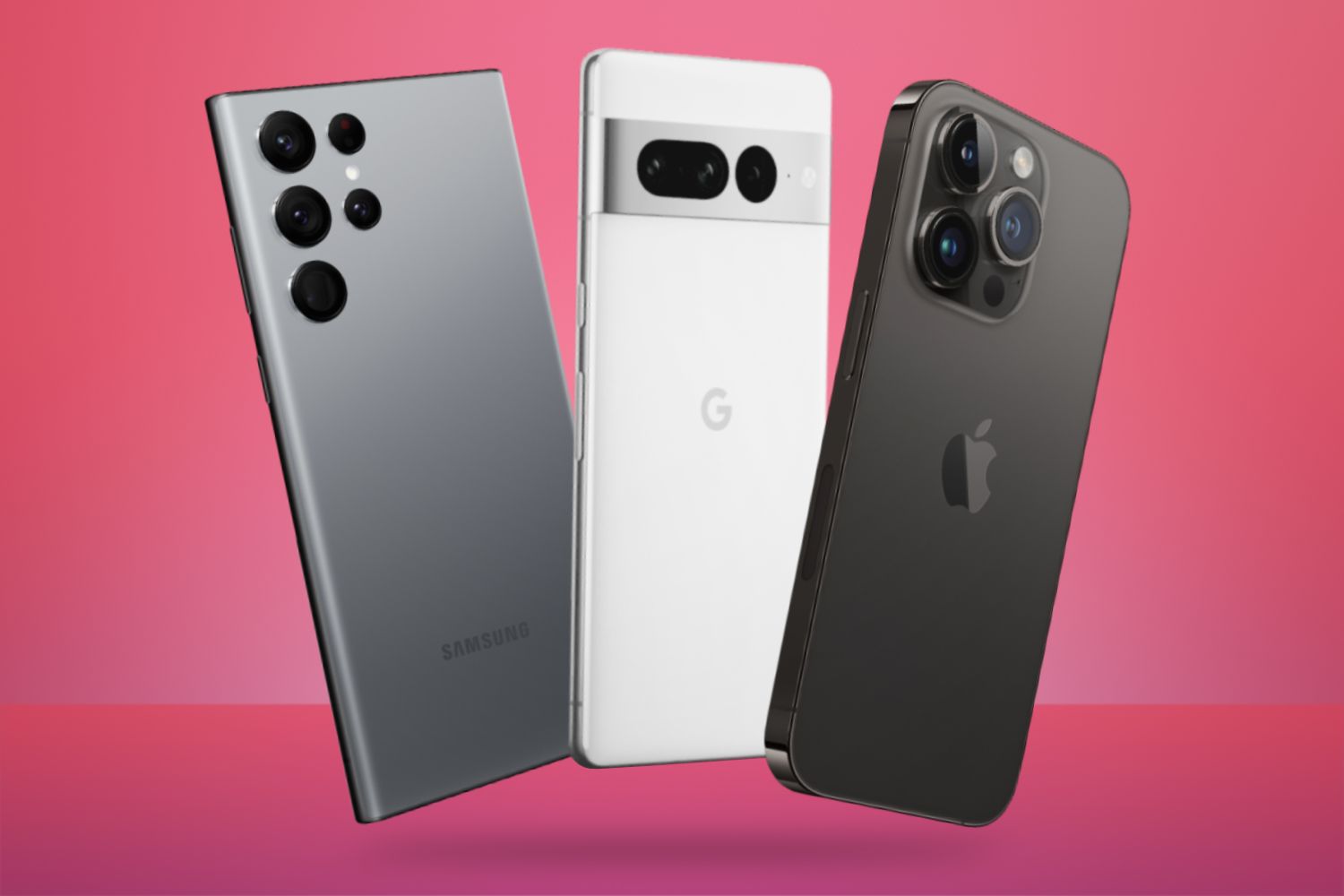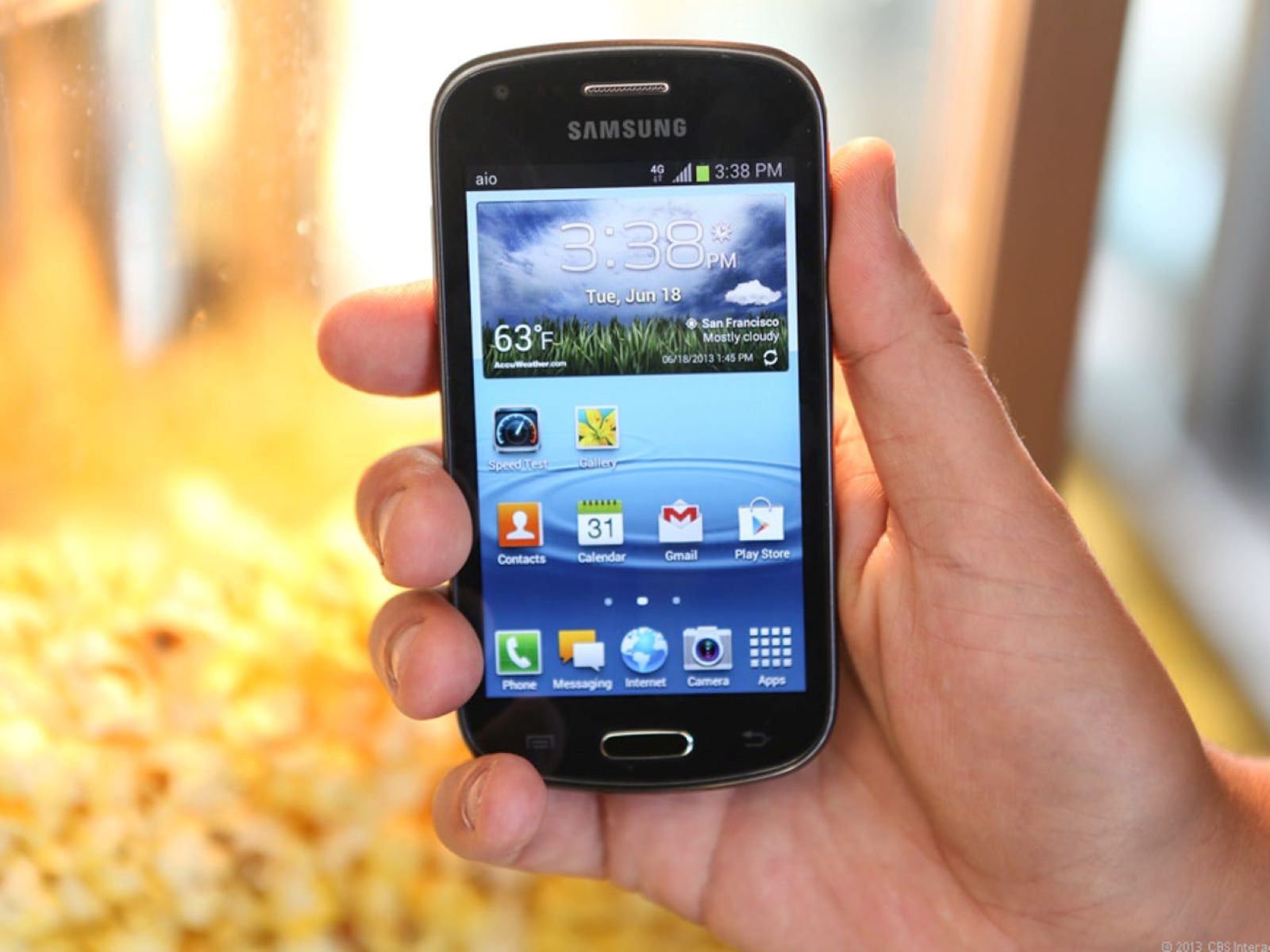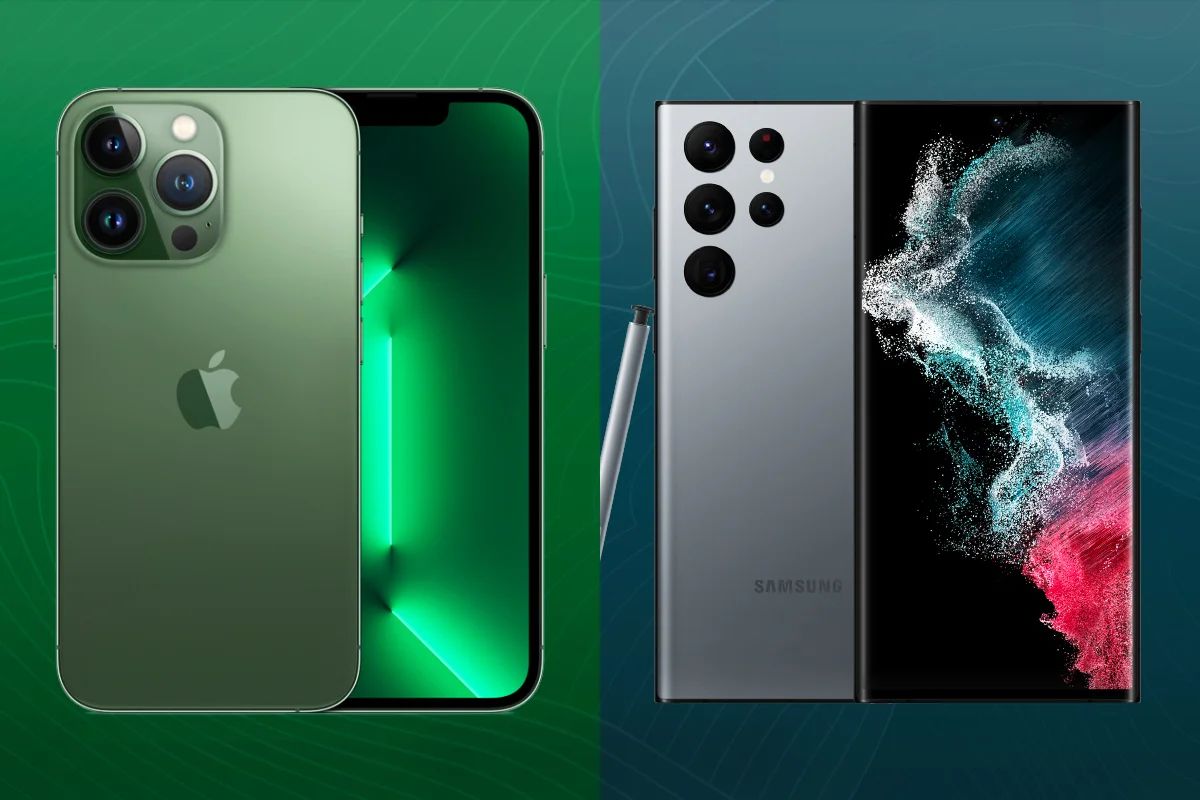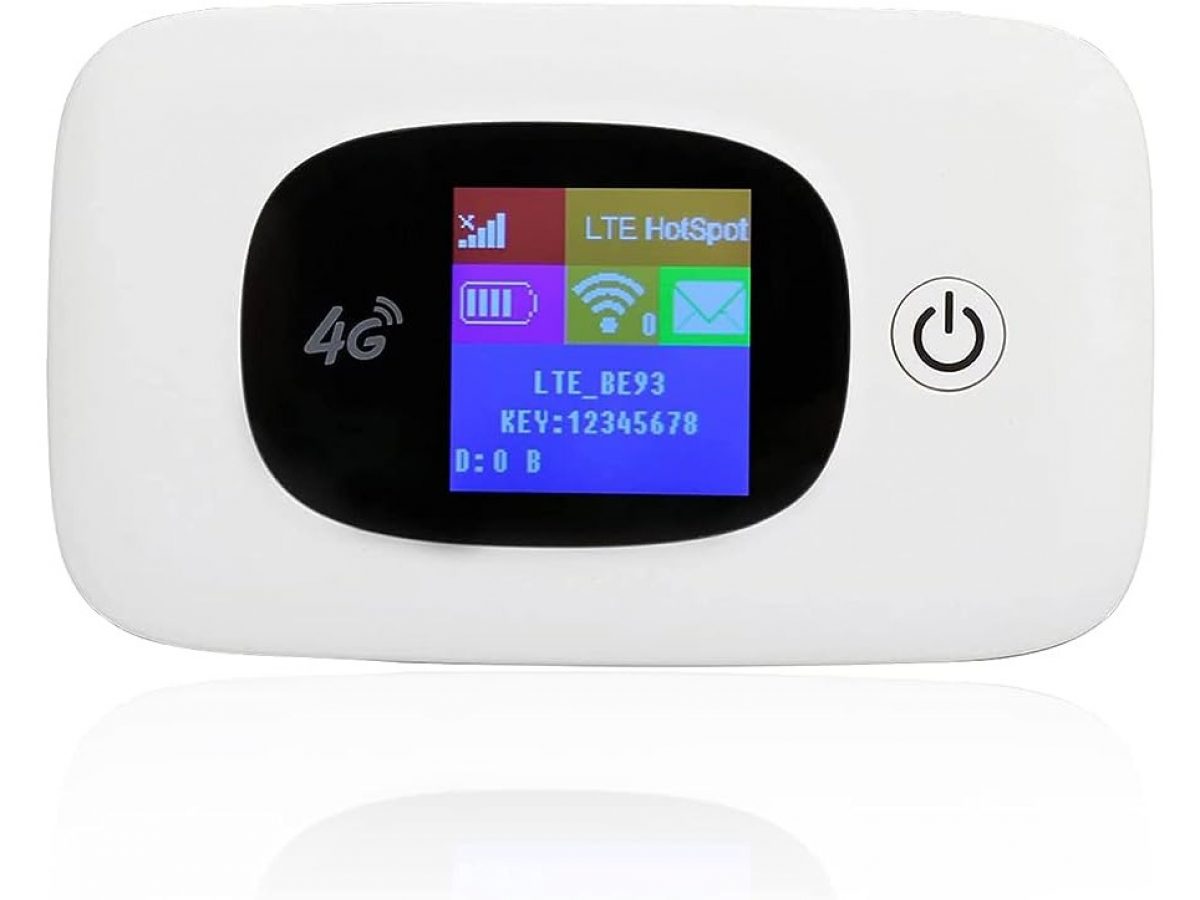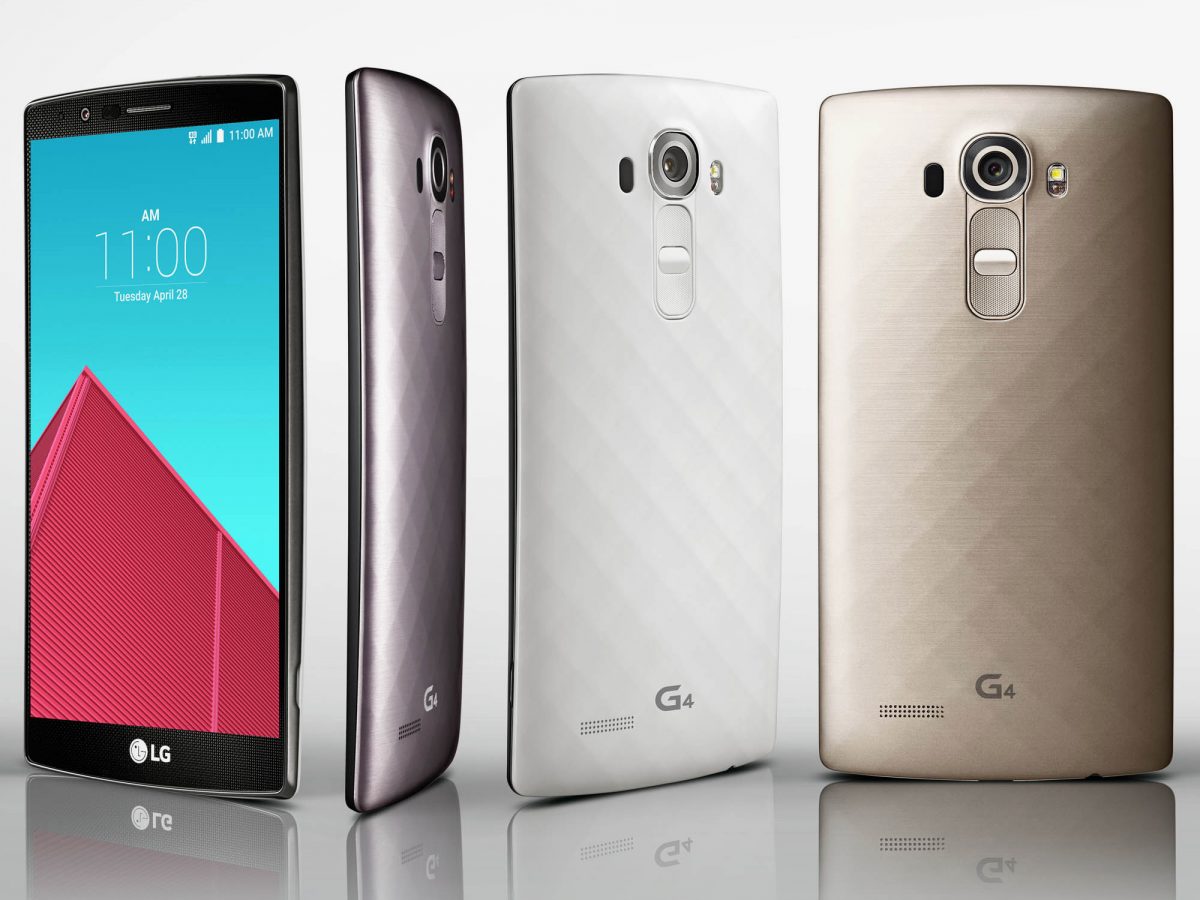Introduction
Welcome to the world of mobile communication where every new advancement brings exciting possibilities. In the ever-evolving realm of cellular networks, it’s not uncommon for users to wonder how long their current technology will stay relevant. With the rapid pace of technological advancements, it’s natural to question how long 4G, the fourth generation of cellular network technology, will remain in use.
Cellular networks have come a long way since their inception. We’ve witnessed the transition from the first generation (1G) analog networks to the second generation (2G) digital networks, followed by the introduction of 3G networks that brought mobile data capabilities to the mainstream. Then came 4G, with its promise of even faster speeds and improved performance.
4G, or fourth-generation technology, has revolutionized the way we access and use mobile internet. It has been around for over a decade, providing users with faster download and upload speeds, lower latency, and enhanced overall performance compared to its predecessors. With 4G, we can stream high-definition videos, enjoy lag-free online gaming, and seamlessly connect multiple devices to the internet.
One of the primary advantages of 4G is its ability to handle large amounts of data, which was crucial with the rise of video and multimedia content consumption. With faster speeds and better network capacity, it allowed for the development of various innovative applications and services, such as video conferencing, cloud storage, and IoT devices.
However, the technology world is always moving forward, and the next generation of cellular networks, 5G, is already on the horizon. The fifth-generation technology is expected to bring even faster speeds, ultra-low latency, and massive connectivity, promising to revolutionize industries and enable futuristic applications like autonomous vehicles and smart cities.
With the emergence of 5G, one might wonder if 4G will become obsolete in the near future. Will it be replaced entirely, or will it continue to coexist alongside 5G? Understanding the future of 4G is essential for users and businesses alike, as it impacts device compatibility, network availability, and the overall user experience.
So, let’s delve into the world of 4G and explore its future. Is 4G going away anytime soon, or will it still play a vital role in our connected lives? Join us on this journey to uncover the secrets of 4G’s longevity and its place in the evolving landscape of mobile communication.
The Evolution of Cellular Networks
Before we delve into the future of 4G, let’s take a moment to understand the evolution of cellular networks and how we arrived at the fourth generation. The first generation (1G) of cellular networks, introduced in the 1980s, enabled basic analog voice calls. It was a significant leap forward in communication technology, allowing people to make calls on the go without being tied to a landline.
As technology progressed, the second generation (2G) of cellular networks emerged in the 1990s. 2G brought digital transmission, offering improved voice quality and the capacity to send text messages. It was during this era that mobile phones became more accessible to the general public and started to gain widespread popularity.
The third generation (3G) of cellular networks arrived in the early 2000s, bringing significant advancements in data transmission. With 3G, users could access the internet on their mobile devices and enjoy services like email, web browsing, and multimedia content streaming. This marked a turning point in mobile communication, as the internet became an integral part of our daily lives.
Then came 4G, the fourth generation of cellular network technology, which introduced a significant leap in terms of capabilities and performance. 4G networks provided users with unparalleled download and upload speeds, low latency, and improved network capacity.
Now, we stand on the precipice of the fifth generation (5G) of cellular networks. 5G promises to be the most revolutionary advancement yet, boasting lightning-fast speeds, ultra-low latency, and the ability to connect a massive number of devices simultaneously. It has the potential to transform industries and enable groundbreaking applications like remote surgery, autonomous vehicles, and augmented reality experiences.
While 5G is the talk of the town, it does not mean that 4G will suddenly disappear. Rather, it is more likely that 4G and 5G will coexist for the foreseeable future. 4G networks will continue to serve as a reliable backbone, supporting the majority of communication needs, while 5G will provide the cutting-edge capabilities required for specific use cases and applications.
It’s important to note that the transition from 4G to 5G will not happen overnight. It will take time for infrastructure to be upgraded, devices to become widely available, and coverage to expand. During this transition period, 4G will remain the go-to technology for most mobile users, ensuring backward compatibility and seamless connectivity.
So, while 5G certainly holds significant potential, 4G will remain a crucial part of our mobile communication landscape for quite some time. Its widespread adoption, robust infrastructure, and reliable performance make it an essential technology that continues to serve millions of users worldwide.
What is 4G?
4G, short for fourth generation, refers to the fourth iteration of cellular network technology. It represents a significant leap forward in terms of speed, performance, and capabilities compared to its predecessors. 4G networks provide users with faster data speeds, lower latency, and enhanced overall connectivity.
At its core, 4G is designed to deliver high-speed mobile internet access, enabling users to stream videos, download files, and browse the web seamlessly on their smartphones, tablets, and other connected devices. It offers download speeds that range from 5 to 100 megabits per second (Mbps), with some advanced versions capable of reaching even higher speeds.
One of the key aspects that differentiate 4G from previous generations is the use of packet-switched networks. Instead of relying solely on circuit-switched technology for voice calls, 4G leverages packet switching for both voice and data transmission. This allows for more efficient use of network resources and the simultaneous streaming of data and voice services.
Another crucial feature of 4G is its support for IP-based networks. 4G networks are built on IP (Internet Protocol) standards, which means that all types of data, including voice calls, are encapsulated into IP packets. This enables seamless integration with the internet and facilitates the development of various innovative applications and services.
4G networks utilize advanced modulation schemes and multiple antenna technologies, such as Multiple Input Multiple Output (MIMO), to enhance data transmission efficiency and improve signal quality. These technologies help reduce interference and increase network capacity, ensuring a smoother and more reliable user experience.
In addition to faster data speeds, 4G networks also offer lower latency compared to previous generations. Latency refers to the time it takes for data packets to travel from the sender to the receiver and back. With lower latency, users experience less delay when interacting with online applications, making activities like online gaming, video conferencing, and real-time streaming much more enjoyable.
4G networks also provide improved network capacity, allowing for more simultaneous connections and better performance in densely populated areas. This is especially important in today’s digital age, where an increasing number of devices rely on mobile connectivity, ranging from smartphones and tablets to IoT devices and smart home technologies.
Overall, 4G technology has transformed the way we access and use mobile internet. It has opened up new possibilities, enabling us to stay connected, productive, and entertained on the go. From streaming high-definition videos to accessing cloud-based services and enjoying online gaming, 4G has become an indispensable part of our daily lives.
The Advantages of 4G
4G technology brings numerous advantages and benefits to users, enhancing their mobile communication experience in various ways. Let’s explore some of the key advantages that 4G networks offer:
- Faster Speeds: One of the most significant advantages of 4G is its faster data speeds compared to previous generations. With download speeds ranging from 5 to 100 Mbps or more, users can quickly download files, stream high-definition videos, and browse the internet with minimum buffering.
- Low Latency: 4G networks offer lower latency, meaning there’s less delay between sending and receiving data. This is particularly beneficial for real-time applications like video conferencing, online gaming, and virtual reality experiences, where low latency is crucial for seamless interaction.
- Improved Network Capacity: 4G networks can handle a significant amount of data traffic, thanks to their advanced network capacity. This means that even in crowded areas with many users, the network can provide stable and reliable connectivity, ensuring uninterrupted browsing and multimedia streaming experiences.
- Enhanced Multimedia Streaming: With faster speeds and improved network capacity, 4G enables high-quality multimedia streaming on mobile devices. Users can enjoy seamless streaming of video and audio content, including high-definition videos, music, and online radio, without interruptions or buffering delays.
- Greater Access to Online Services: 4G technology opens up a world of online services and applications, including video conferencing, cloud storage, and social media platforms. With fast and reliable connectivity, users can access these services on the go, keeping them connected and productive wherever they are.
- Support for IoT Devices: The Internet of Things (IoT) is a rapidly growing field that connects various devices to the internet. 4G networks provide the necessary infrastructure and support to connect and control IoT devices remotely, enabling applications like smart homes, wearable devices, and industrial automation.
- Wide Coverage: 4G networks have seen widespread adoption around the world, resulting in broad coverage in both urban and rural areas. This means that users can enjoy high-speed connectivity and access to online services even in remote locations.
- Backward Compatibility: Devices that support 4G networks are backward compatible with previous generations, such as 3G and 2G. This ensures seamless connectivity and allows users to access mobile networks even in areas where 4G coverage may be limited.
Overall, the advantages of 4G technology significantly enhance the mobile communication experience, providing faster speeds, lower latency, improved network capacity, and access to a wide range of online services. With its robust infrastructure and support for advanced applications, 4G remains a critical technology for users around the world.
The Emergence of 5G
The fifth generation of cellular network technology, known as 5G, is poised to revolutionize the way we connect and communicate. It represents a significant leap forward in terms of speed, latency, and capacity compared to its predecessor, 4G. Let’s take a closer look at the emergence of 5G and what it has to offer:
5G promises to deliver blazing-fast speeds, with data rates that can reach up to several gigabits per second (Gbps). This means that users can download files, stream high-resolution videos, and access data-intensive applications with unparalleled speed and efficiency.
One of the key features of 5G is its ultra-low latency, meaning there is minimal delay in transmitting data. With latency as low as one millisecond, 5G networks enable real-time communication and support applications that require instantaneous responsiveness, such as autonomous vehicles, remote surgery, and immersive virtual reality experiences.
Another significant advantage of 5G is its ability to support massive connectivity. 5G networks are designed to connect a vast number of devices simultaneously, enabling the Internet of Things (IoT) to thrive. This opens up possibilities for smart cities, smart homes, and interconnected devices that seamlessly work together to enhance our daily lives.
5G networks leverage advanced technologies, such as beamforming and massive MIMO (Multiple Input Multiple Output), to improve signal strength and coverage. These techniques allow for better penetration through obstacles and offer more uniform coverage, ensuring stable connectivity even in urban environments and crowded areas.
With its enhanced capabilities, 5G is expected to transform various industries, including healthcare, transportation, and manufacturing. It will enable advancements like remote patient monitoring, autonomous vehicles, and smart factories, revolutionizing the way we live, work, and interact with technology.
However, the rollout of 5G networks is a complex process that involves significant infrastructure upgrades. As with any new technology, the deployment of 5G will take time and require investment from telecommunication companies and infrastructure providers. The coverage of 5G networks will initially be focused on urban areas and gradually expand to suburban and rural regions.
Furthermore, the widespread availability of 5G-enabled devices is also a crucial factor. While many new smartphones and other connected devices are being released with 5G compatibility, the transition from 4G to 5G for the majority of users may take some time.
Despite these challenges, the emergence of 5G represents a significant step towards a more connected and technologically advanced future. As the rollout of 5G networks continues, we can expect to see groundbreaking applications and services that rely on its speed, low latency, and massive connectivity, transforming industries and enriching our digital experiences.
Will 4G Become Obsolete?
With the emergence of 5G technology, there is natural speculation about the future of 4G. Will 4G become obsolete, or will it continue to coexist alongside 5G? Let’s delve into this question and examine the factors that determine the fate of 4G:
First and foremost, it’s important to recognize that 4G networks have already established a strong presence worldwide. They are widely adopted and offer robust infrastructure, providing reliable connectivity and supporting a myriad of services and applications. Additionally, there are billions of 4G-enabled devices in use, including smartphones, tablets, and IoT devices.
While 5G is touted as the next big thing, its full-scale deployment will take time. It requires significant investments in infrastructure upgrades, including the installation of new base stations and the deployment of fiber-optic networks. This means that, for the foreseeable future, 4G will remain the primary technology for most mobile users.
Moreover, there are areas where 5G coverage may be limited or not available at all, especially in remote or rural regions. In such areas, 4G will continue to play a crucial role in providing reliable mobile connectivity. This is particularly relevant for applications that do not require ultra-fast speeds or low latency, such as voice calls, messaging, and accessing basic online services.
Another factor to consider is backward compatibility. 5G devices are designed to be backward compatible with 4G networks, ensuring that users can seamlessly switch between the two technologies. This compatibility allows for a smooth transition, enabling 4G devices to continue functioning even as 5G networks expand.
Additionally, 4G is well-suited for applications that do not require the speeds and capacities offered by 5G. For example, activities like web browsing, social media usage, and streaming standard-definition videos do not necessarily require the ultra-fast speeds provided by 5G networks. As a result, 4G will remain a viable option for these everyday tasks.
Furthermore, the lifespan of a mobile network technology is typically longer than the lifespan of individual devices. While newer devices are being launched with 5G capabilities, many users will continue to operate their 4G devices for an extended period. Telecommunication providers will likely ensure the availability of 4G networks to cater to the needs of these users.
Overall, it is unlikely that 4G will become obsolete in the near future. Rather, it will continue to coexist with 5G, serving as a reliable and widely available technology for a range of mobile communication needs. As the transition to 5G continues to unfold, 4G will play a pivotal role in bridging the gap and ensuring seamless connectivity for users.
The Future of 4G
While the emergence of 5G technology may overshadow 4G, the future of 4G remains promising and impactful. As we transition to a more connected and technologically advanced world, 4G will continue to serve an essential role. Let’s explore the future of 4G:
One of the key aspects of the future of 4G is its widespread adoption and availability. With 4G networks already established globally, they will continue to be accessible in a wide range of regions, including urban, suburban, and rural areas. This ensures that users can rely on 4G connectivity for their mobile communication needs, even as 5G technology expands.
Moreover, 4G will remain relevant for various applications and use cases. While some applications will benefit from the ultra-fast speeds and low latency offered by 5G, there are numerous scenarios where 4G is perfectly adequate. Activities like web browsing, social media usage, and streaming standard-definition videos do not necessarily require the higher speeds provided by 5G networks, making 4G a viable option for everyday tasks.
Additionally, 4G will continue to support a wide range of connected devices. As the Internet of Things (IoT) continues to grow, many IoT devices, including smart home devices, wearables, and industrial sensors, rely on 4G connectivity for remote monitoring and control. 4G networks provide stable and reliable connections for these devices, ensuring seamless integration into our daily lives.
Furthermore, 4G will play a crucial role in bridging the digital divide. In regions with limited access to high-speed internet, 4G networks can provide an essential lifeline for communities to access online resources, educational materials, and other crucial services. The widespread availability of 4G networks, coupled with the backward compatibility of devices, ensures that individuals will continue to have access to mobile communication technologies.
Telecommunication providers will also continue to maintain and improve 4G networks to meet the needs of their customers. This includes optimizing network capacity, enhancing signal strength, and expanding coverage to underserved areas. As a mature and reliable technology, 4G will receive ongoing support to ensure its longevity and effectiveness.
Though 4G will not be at the forefront of technological advancements, it will remain a crucial component of our connected world. As 5G continues to evolve and reach its full potential, 4G will continue to provide stable and reliable connectivity for a range of applications and devices. Its widespread adoption, established infrastructure, and compatibility with existing devices position 4G as a reliable and accessible technology for the foreseeable future.
Conclusion
In conclusion, the future of 4G is bright and impactful, despite the emergence of 5G technology. With its widespread adoption, robust infrastructure, and compatibility with existing devices, 4G will continue to play a crucial role in our mobile communication landscape.
While 5G offers faster speeds, ultra-low latency, and massive connectivity, the transition from 4G to 5G will take time. 4G networks are already well-established and widely available, providing reliable connectivity to users around the world. In areas where 5G coverage is limited or unavailable, 4G will remain the go-to technology, ensuring seamless connectivity for everyday tasks and applications.
Moreover, 4G will continue to serve various use cases and applications. It is well-suited for activities like web browsing, social media usage, and streaming standard-definition videos. Additionally, 4G will support the growing ecosystem of IoT devices, enabling remote monitoring and control for smart homes, wearables, and industrial automation.
Telecommunication providers will continue to maintain and improve 4G networks, optimizing network capacity, expanding coverage, and enhancing signal strength. Backward compatibility ensures that existing devices can seamlessly connect to 4G networks, allowing users to leverage their current devices while also benefiting from advancements in connectivity.
As we navigate the ever-evolving landscape of mobile communication, it is important to recognize the value of 4G technology. It has transformed the way we access and use mobile internet, providing faster speeds, lower latency, and improved network capacity. 4G will continue to be a reliable and accessible technology, bridging the digital divide and ensuring connectivity for individuals and communities around the world.
While 5G technology brings exciting possibilities and advancements, 4G remains a vital component of our connected world. Its future is promising, and it will coexist alongside 5G, serving as a sturdy foundation for mobile communication for years to come.









